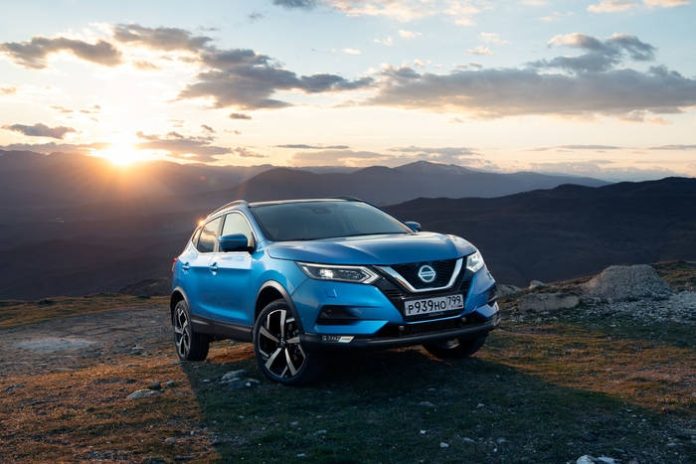Today, crossovers have become some of the best-selling cars on the planet, but almost 15 years ago, no one even knew the word. The Nissan Qashqai, which in 2006 became the forerunner of the crossover class, has received another update. The portal “Yuzhny Avtomobil” went to Greece to test drive the new Qashqai.

During its existence, the Nissan Qashqai has firmly established itself among the top ten most popular crossovers not only in the world, but also in Russia. The Qashqai crossover has always been a solid mid-range model and enjoyed steady demand. During the model’s sales in Russia, it has become the owner of approximately 300,000 people. You must admit, this is a good result. The second-generation restyling came to our market, as always, belatedly. In Europe, it’s been on sale for two years now. In America, the restyled Qashqai is known as the Rogue Sport, and even in Ukraine, dealers are selling the updated Qashqai at full capacity. In Russia, however, things are more complicated, and the updated Qashqai only went into production in St. Petersburg at the end of February 2019. Just two months passed, and we got behind the wheel of one of the first batch assembled in Russia, although dealers will begin selling the first production units on April 1st. Moreover, our Qashqai is somewhat different from the European version; specialists from the recently established Nissan Technical Center in Russia worked on adapting it to Russian operating conditions. Before the updated Qashqai was put into production in Russia, a huge amount of information was collected from current owners of the crossover. Some complained about the shaking suspension, others were unhappy with the sound insulation, and others complained about weak dynamics and unresponsive steering. All customer complaints, comments, and suggestions were carefully collected, and the updated Qashqai truly is an improvement.

What was improved
Over the two years of development of the updated Qashqai, almost all customer requests were taken into account. Regarding the previous comments on the suspension, engineers at Nissan’s Russian technical center have now thoroughly overhauled it. Specifically, the spring stiffness was reduced, rebound springs were added to the shock absorbers, and the front strut buffers were lengthened. Thanks to these changes, the car has become less shaking, body vibrations have been reduced, and noise from driving over bumps has also decreased. Incidentally, the car really has become quieter acoustically. And this is no coincidence; the sound insulation has been almost completely redesigned. The updated Qashqai now has improved engine compartment soundproofing. Additionally, technicians from Nissan’s Russian center insulated the front fenders, the interior floor, the trunk, even the sills, and even installed insulation under the dashboard with sound-absorbing materials. Nissan even boasted about new acoustic glass, which now reduces the amount of outside noise entering the cabin. Simply put, the windshield is now thicker.

Exterior Changes
My fellow journalists were skeptical about the exterior changes to the updated Qashqai, although, in my opinion, it looks more presentable thanks to the wide V-shaped grille, new bumpers, and sharper edges. Overall, the new Qashqai is very reminiscent of the updated X-trail, so the uninitiated buyer will barely be able to tell the two models apart in city traffic. As for the rear of the car, the changes are minimal – new lights and a slightly modified bumper. However, there are now four wheel sizes available. The standard wheel size will be 16-inch stamped caps, while cast wheels are available in 17, 18, and 19 inches. Previously, 18-inch wheels were not available. They first appeared on the updated Qashqai.

Changes in the interior
The interior now looks richer and more solid, and the stylish steering wheel with a slanted bottom looks especially good. A similar one is installed in the new Nissan X-Trail. Incidentally, the steering wheel heats up the entire circumference, not just the grip area. Of course, in Greece, where the test drive took place, this feature was not particularly useful, but in Russia it will be in demand. A heated windshield is also available for Russian winters, which is already included in the basic configuration. We tested a car with a leather interior, but premium elements are also included in the base version. For example, the dashboard in front of the passenger has a large leather insert, which is already included in the base version.

Heated seats are now available not only in the front, but also in the rear seat. However, for rear passengers, the back of the seat does not warm completely, but only in the lumbar region. Automatic windows are included in all trim levels, which is something not even the top-end X-Trail lacks. The panoramic roof on the Qashqai is a nice feature; it was available before and makes the interior brighter, but alas, it does not open like a hatch. It is available only in the two top trim levels.

Another new feature in Russian Qashqais is the Yandex.Auto audio system. We’ve previously seen it on the updated Nissan X-Trail. The system comes with a year’s prepaid internet plan from MTS. After a year, you can continue using the plan, but at your own expense. If the MTS plan isn’t suitable, you can exchange the SIM card for any other operator. You can also share the internet from your mobile device. Yandex.Auto will connect to your mobile phone without any hassle.

By the way, Yandex.Auto now integrates a rearview camera into the Qashqai, something that wasn’t available on the recently updated X-Trail. Although the camera image is rather basic and lacks detail, the updated Qashqai does have lane keeping assist, but it only alerts you when you stray from the lane markings. The Qashqai can’t steer. Again, while the X-Trail and Qashqai were ideologically different vehicles a few years ago, they’re now practically like brothers. The cars are very similar in appearance and functionality. The FEB system, which recognizes obstacles and is hidden under a glass emblem on the radiator grille, was first introduced on the updated version of the Russian X-Trail before the Qashqai. The system will automatically brake in front of an obstacle if your speed is between 40 and 80 km/h. The FEB radar only reacts to large metal objects. FEB is useless in front of pedestrians, cyclists, and concrete walls.

There are now only two engines
As for engines, there are now only two. The entry-level Qashqai, as before, is equipped with a 1.2-liter turbocharged gasoline engine with a capacity of 115 horsepower. But Nissan predicts that the lion’s share of sales will be accounted for by a car with a two-liter gasoline engine with a capacity of 144 horsepower, which is what we had for testing. There’s no diesel engine, and it’s unlikely to be available. Front-wheel drive or all-wheel drive are available. The engines are paired with a manual or CVT transmission, which simulates gear changes. As for driving on the mountain serpentines near the Greek monasteries of Meteora, the car climbs the hills thoughtfully. Of course, the car was never a high-speed car before. With the CVT, you can’t really get going, but the car feels a little more responsive to the accelerator pedal and more composed—that’s exactly what the specialists at Nissan Technical Center Europe worked on.

Prices
Nissan’s Russian office is doing a very smart job of introducing the updated Qashqai to the Russian market. The car looks very impressive, especially in its signature blue color. While we were driving around Greece for three days, locals turned their heads, watching us. The new model’s exterior is truly captivating, and when it’s equipped with blacked-out 18- or 19-inch wheels, it’s simply stunning. The updated Qashqai’s entry-level XE trim, with a 1.2-liter engine, manual transmission, and front-wheel drive, starts at 1,290,000 rubles. The top-of-the-line version with all-wheel drive, a 2.0-liter engine, and a continuously variable transmission starts at 1,576,000 rubles. And if you add all the bells and whistles, 19-inch wheels and a panoramic roof, the top-of-the-line Qashqai LE TOP will cost you 1,970,000 rubles.








